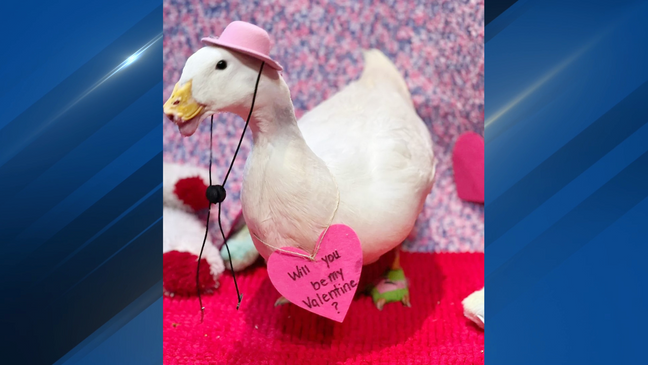In Williamson County, Texas, a story of resilience, innovation, and cross-community effort is unfolding, illustrating the bond between humans and wildlife. All Things Wild, a wildlife rehabilitation center, has been a beacon of hope for over 4,000 animals in the past year alone. Among these, a Pekin duck named Polly has not only captured the hearts of the center’s staff and volunteers but also highlighted the capabilities of 3D printing technology in animal care.
Polly’s story began about six months ago, when she was discovered with a badly damaged bill, likely the result of a predator attack. This injury posed a significant challenge for Polly, affecting her ability to preen and maintain her feathers. Despite this, Polly adapted to her new circumstances with remarkable resilience, demonstrating an unyielding spirit and an ability to thrive against the odds.

“She kind of implanted herself in everybody’s lives here,” said Jessica Green, a member of the All Things Wild team. “She doesn’t even like people talking over her … She’ll just start quacking away all day. “She’s adapted beautifully. She really can eat anything. They preen themselves … and she can’t do that. She can’t get all those excess feathers off.”
The issue of Polly’s damaged bill prompted a creative solution from the compassionate team at All Things Wild. They proposed the idea of a 3D printed prosthetic bill, an approach that brought together wildlife caretakers and the academic community in a joint effort to restore Polly’s quality of life. Dr. Laura Hobgood of Southwestern University, along with the school’s students, accepted the challenge, embarking on a pioneering project that could set a precedent for future wildlife rehabilitation efforts.
“Our goal is to eventually split this into a two-pronged, fully mobile replacement beak and then attach it at her connection point … so that it completes the bill, and she goes back to 100% functionality,” junior Ryan Andrade said. “We’re hoping that with our help, we can get her back in the water and living a happy life.”
This collaborative endeavor involved detailed research and the use of 3D scanning and printing technologies. Polly and ducks similar to her were scanned to create a workable 3D model, ensuring that the prosthetic bill would be a natural fit. The goal was to design a fully mobile replacement beak that would attach seamlessly to Polly’s existing structure, allowing her to regain 100% functionality. Meanwhile, the local community has rallied around Polly’s cause. Wag Heaven, a local pet supply store, has introduced “Dottie the Duck” plush toys, with proceeds supporting Polly’s ongoing care and the needs of other animals at All Things Wild.
While the community efforts to provide aid to Polly are certainly heartwarming, the broader implications of projects like these have yet to be fully felt. The field of veterinary medicine has provided countless examples of 3D printing used to help animals, but a more concerted effort to push adoption of the technology in the sector is less palpable, if existent at all. This is likely because, as an anthropocentric species, human health is valued more highly than the livelihood of the nature in which we exist.
In turn, though medicine was one of the fastest growing sectors for additive manufacturing in the last decade, it will take longer for a similar growth rate to occur in veterinary medicine. Right now, there is one prominent company, Wimba, dedicated to 3D printing devices for animals in any major way. However, as AM at large grows, we can certainly expect others to follow suit, including legacy veterinary device providers. At the same time, and likely at a faster rate, veterinary educational institutions will explore the technology until ultimately bringing it to the real world at scale.
Images courtesy of KEYE Austin.
Subscribe to Our Email Newsletter
Stay up-to-date on all the latest news from the 3D printing industry and receive information and offers from third party vendors.
Print Services
Upload your 3D Models and get them printed quickly and efficiently.
You May Also Like
Making 3D Printing Personal: How Faraz Faruqi Is Rethinking Digital Design at MIT CSAIL
What if your 3D printer could think more like an intelligent assistant, able to reason through a design idea, ask questions, and deliver something that works exactly the way the...
Reinventing Reindustrialization: Why NAVWAR Project Manager Spencer Koroly Invented a Made-in-America 3D Printer
It has become virtually impossible to regularly follow additive manufacturing (AM) industry news and not stumble across the term “defense industrial base” (DIB), a concept encompassing all the many diverse...
Heating Up: 3D Systems’ Scott Green Discusses 3D Printing’s Potential in the Data Center Industry
The relentless rise of NVIDIA, the steadily increasing pledges of major private and public investments in national infrastructure projects around the world, and the general cultural obsession with AI have...
Formlabs Teams Up with DMG MORI in Japan
In late June, Nick Graham, Chief Revenue Officer at Formlabs, announced on LinkedIn that the company had partnered with DMG MORI, one of the world’s leading machine tool companies, to...

































